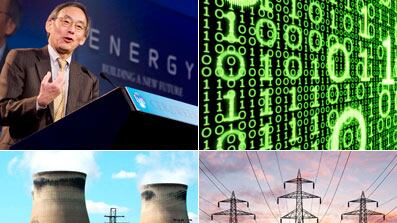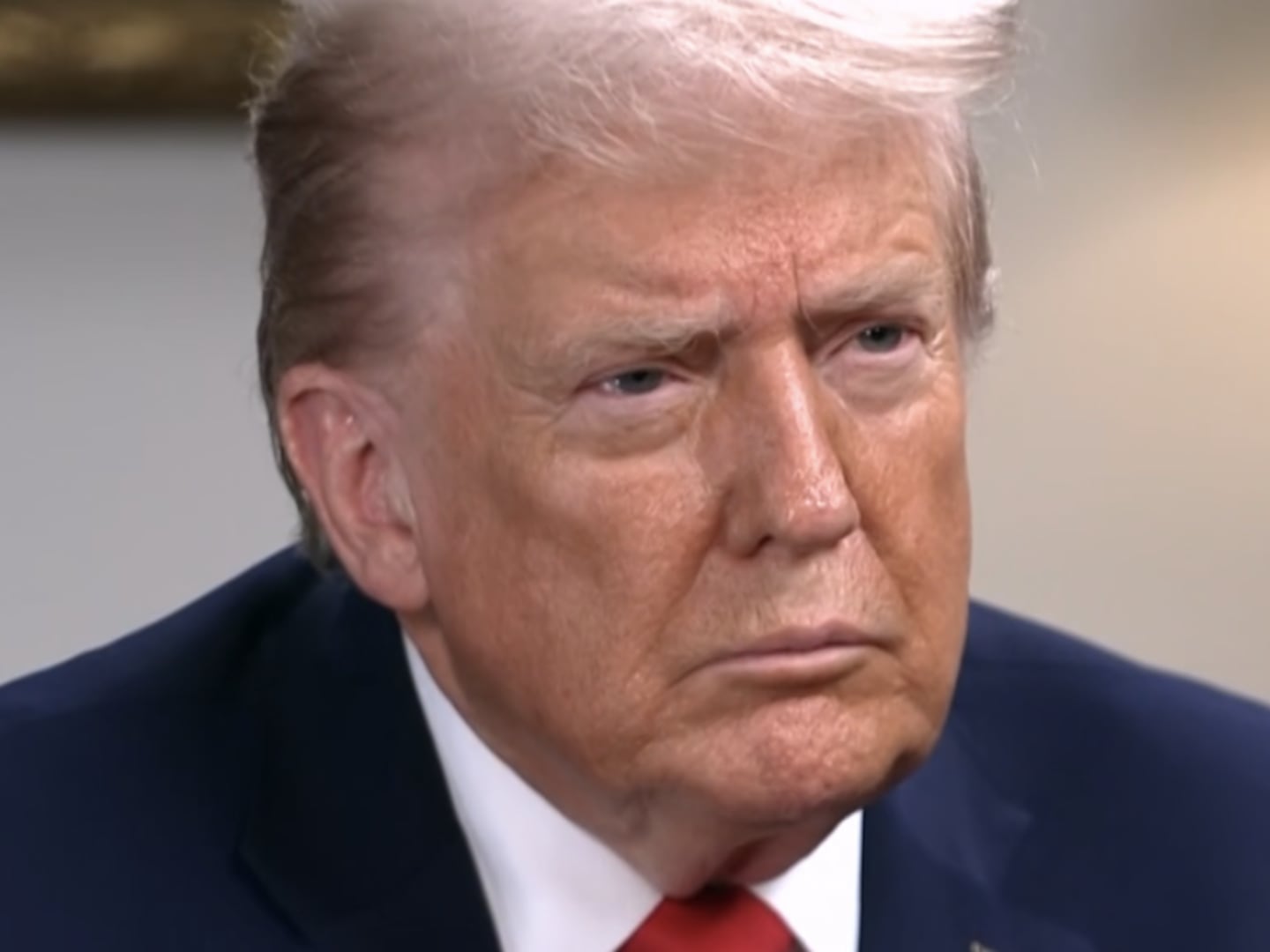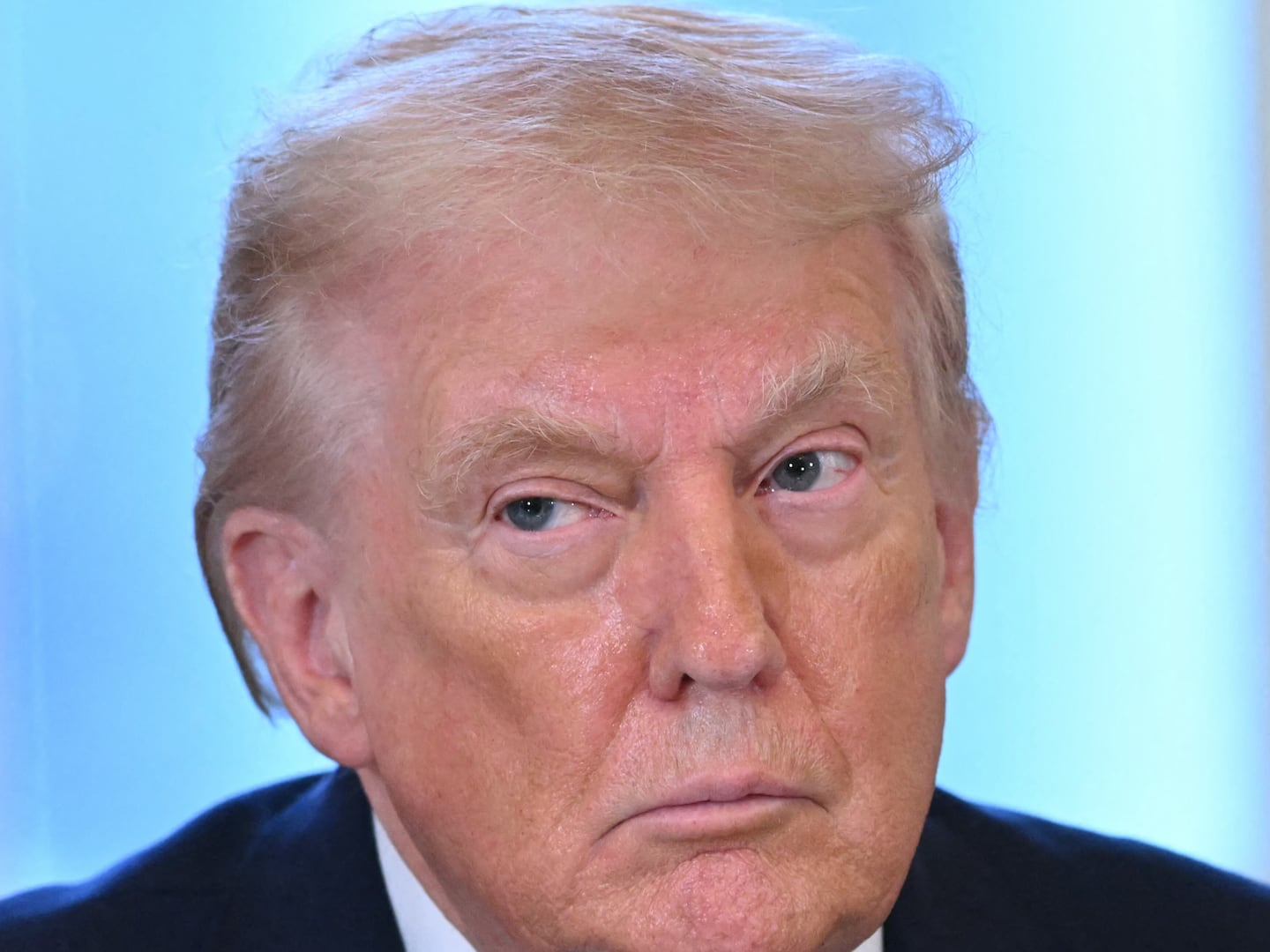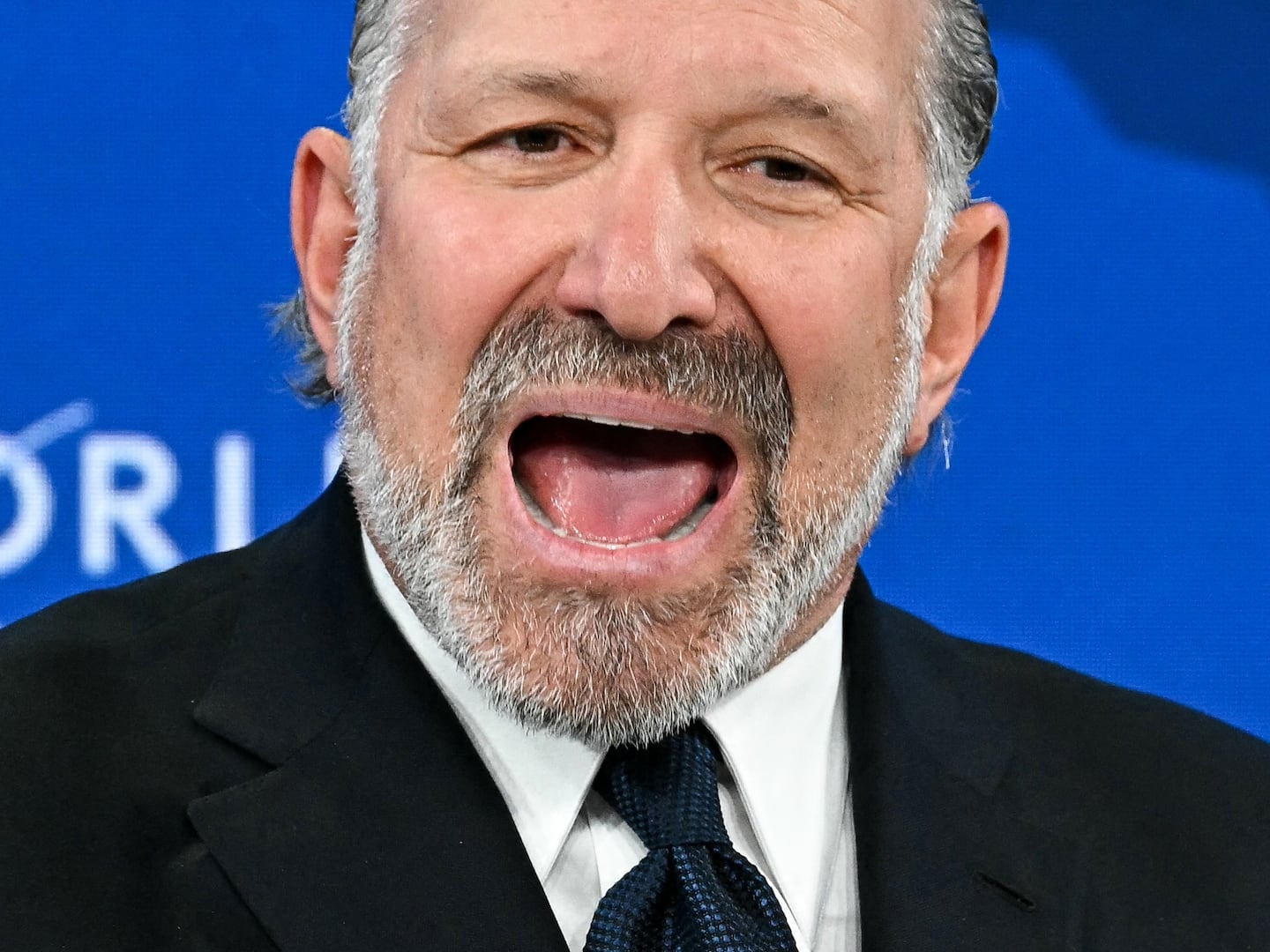Green Giants: Conversations with Global Environmental Leaders
In an exclusive Earth Day interview with The Daily Beast, Secretary of Energy Steven Chu defends the Obama administration’s focus on offshore drilling, nuclear power, and big spending on technological innovation.
Two parts Nobel Prize-winning scientist and one part nascent politician, Steven Chu holds the reins at the Department of Energy at a time when Americans, according to a recent Pew Research Center Poll, are historically distrustful of government and its ability to solve the nation’s most vexing problems. Big legislative moves on the environment, in particular, look increasingly difficult to maneuver as the administration has tempered its expectations in the face of opposition from reticent Republicans and obstinate Blue Dog Democrats—leading to major skepticism from environmental activists.
Click below to view photos of Steven Chu and his ideas for turning around the climate crisis.

Yet beneath the radar, Chu, armed with billions in funding from the Recovery Act and the biggest budgets in DOE history, is determined to usher in a new era of American technological innovation. Federal support for research and development into advanced biofuels, mass storage batteries, a new smart grid, and next-generation electric cars are all meant to mitigate global warming and make America the leader in what Chu terms the “new industrial revolution.”
On Earth Day’s 40th anniversary, The Daily Beast sat down with Chu for an in-depth discussion on how he is putting taxpayers’ money to work, the critical need for comprehensive energy legislation, and why—like it or not—offshore oil exploration and a new generation of nuclear power plants must be part of the mix.
As you are aware, there’s great sensitivity to growing deficits and government spending. The Department of Energy received $36.7 billion in funding from the Recovery Act. What return on investment can taxpayers expect and what’s in it for the person who is simply trying to find a job or save their home?
First and foremost, that money was targeted for getting people back to work. It was a program that would create jobs. But it also wanted to start a down payment on the creation of clean energy and a new infrastructure in the United States, which can run in a much more efficient manner and save money. That money could then be pumped back into the economy, creating more jobs.
The DOE has, in effect, become a very powerful venture capital fund. So what investments are you most excited by and how do you see them paying off, say, five or 10 years out?
We believe that just as the computer, semiconductor, and biotech revolutions created great wealth and jobs in the United States, so will this clean energy revolution. As for specific things that we are investing in, fantastically new approaches to building mass storage batteries is something that I think could have great yield. …
As we transition to more and more renewable energy that is variable—and we anticipate more and more buildings, not only homes, but large commercial buildings having large solar or wind facilities nearby—you could store this energy locally. And that makes it much more useful.
Any other specific initiatives that you are bullish on?
The DOE has a very aggressive biofuels program. Corn ethanol is a very good start. But we think we can also incorporate other types of feedstock, particularly agricultural waste like wheat straw, rice straw, corncobs, and lumber waste. This is a great opportunity to create wealth in rural America because it means that all of the agricultural byproducts can now grow tremendously in value. If we can do this—not only ethanol, but fuels that would be direct substitutes for gasoline, diesel and jet fuel—it’s also a decrease of our dependence on imported oil. I see credible scientific progress happening now and for the next five to 10 years.
So within 10 years we can expect to see these advanced fuels at the pump?
I hope so. We have already modified yeast and bacteria—that could be used in the same fermenters that are now being used by farmers across America— that have created direct substitutes for gasoline and diesel. It’s a matter of making the output high enough to be commercially viable. The target is to make it happen without subsidies.
Although $36.7 billion is a huge sum, your own estimate for just one initiative—a new smart grid—tops $100 billion. Is the stimulus money going to be enough to actually make a difference?
The overall investments that we need to modernize the grid are going to be coming from the private sector because the private sector owns the transmission and distribution lines in the Unites States. We see the proper government role more on the research and development side—to fund or co-fund pilot projects. But the fundamental investment has to be made the way that the United States has always made it—through the utility companies and regional transmission offices.
What other technologies have the potential to be big game changers?
I see game changers in carbon capture and sequestration. To meet the world’s climate goals, you’re going to have to capture carbon from virtually every stationary source, so we’re looking for much better ways of doing it economically. Another thing I’m very excited about is America's lead in high-performance computing—computers with such power that you can do realistic simulations. So instead of taking five steps to building something you can take three—that will really shorten the engineering cycle and that goes back to economic competiveness. …
We’ve started to do this in the design of airplanes and buildings. Now you can simulate and the designers know in great detail how much energy a building will consume. So if we can do this with new power plants and nuclear reactors, it goes back to saving money and energy.
President Obama has recently come under fire for his offshore drilling plan. On the right, Mitch McConnell and organizations like the Heritage Foundation say it doesn’t go far enough. On the left, Al Gore’s Alliance for Climate Protection and coastal senators like Bill Nelson are ardently opposed. Where do you stand?
I stand where the president stands. He said even before assuming office that if oil and gas exploration were part of a comprehensive energy and climate plan, he would be for it. Similarly, not everybody is enamored with nuclear power. I think nuclear power has to be part of the development as we go to cleaner energy sources because it provides baseload power. It will take several decades to grow renewable energy. We are working on energy storage and a transmission system that can handle the variable wind and solar that we expect to be ever-increasingly deployed. But we don’t suddenly go to 50 percent because you’ve got to develop all of these systems. So we have to do all of these things in parallel.
But as for the oil drilling, is it more about political pragmatism in an effort to get support for climate and energy legislation in the Senate than it is an actual solution to our energy needs?
There are several goals in our energy strategy. It is a goal to decrease our oil dependence and carbon emissions, and make sure we are the technological leaders. And the ultimate goal is to create policies that will drive innovation in the United States. If we are innovation leaders it will be great for export. And so all of these policies are geared to that.
But do you think there is actually enough oil offshore to increase our energy security and significantly lessen our dependence on foreign oil?
That is step one in the plan— to determine whether the resources are there to warrant exploitation in a very environmentally safe manner. But we also want to stress the other parts, like higher mileage efficiency standards, the ramping up of biofuels and the electrification of personal vehicles.
Which are beginning to roll out this year.
Right. You start by rolling something out this year, but we are also very active in ever-improving the batteries, which is the key component in electric vehicles and plug-in hybrids. There’s a lot of action there.
What sort of range do you see all-electric vehicles having as the battery technology advances?
The Nissan Leaf's range is about 100 miles, so I think 300 to 350 miles would be great because you’re shrinking the battery, making it lighter and allowing for more cargo and passenger space at the same time.
What chance do you give the energy legislation that Senators Graham, Kerry, and Lieberman are working on? Will it pass this year?
I’m a very bad bookmaker. But I think it’s very important to get the message out to all Americans that a comprehensive energy bill is a jobs bill. It is a bill that’s going to create the foundation for prosperity in the United States this year, next year and in the decades following. This is about international competition and who is going to lead in this new industrial revolution. This is what is at stake.
China has reportedly just signed preliminary agreements with California to build high-speed rail lines in the state, because America apparently doesn’t have the expertise to do it on its own. Are we falling behind other countries in the technologies that are critical to maintaining our economic power?
Are we at risk? Yes. But once we know which direction we’re going—toward a clean energy economy—we can out-innovate any country in the world. But until we pass a comprehensive energy bill, everything is sitting on the sidelines. What will happen? Will it happen this year? Will it happen next year? Meanwhile, China and European countries are moving very aggressively. And other countries in Asia—Japan, Korea—are all moving. They see the economic opportunity and if we don’t move for five years, we will be playing catch up in a serious way. That’s why I remain optimistic that we move this year.
Matthew Dakotah is conducting a series of interviews with global environmental leaders for The Daily Beast. An award-winning journalist, he has directed 14 magazine and website redesigns and worked at Hearst and Emap. As vice president, group editorial director of Homes & Lifestyles Publishing, he initiated coverage of sustainable development and secured contributors from The New York Times, The Washington Post, Architectural Digest and Princeton. Follow Matthew on Twitter: @matthewdakotah.






